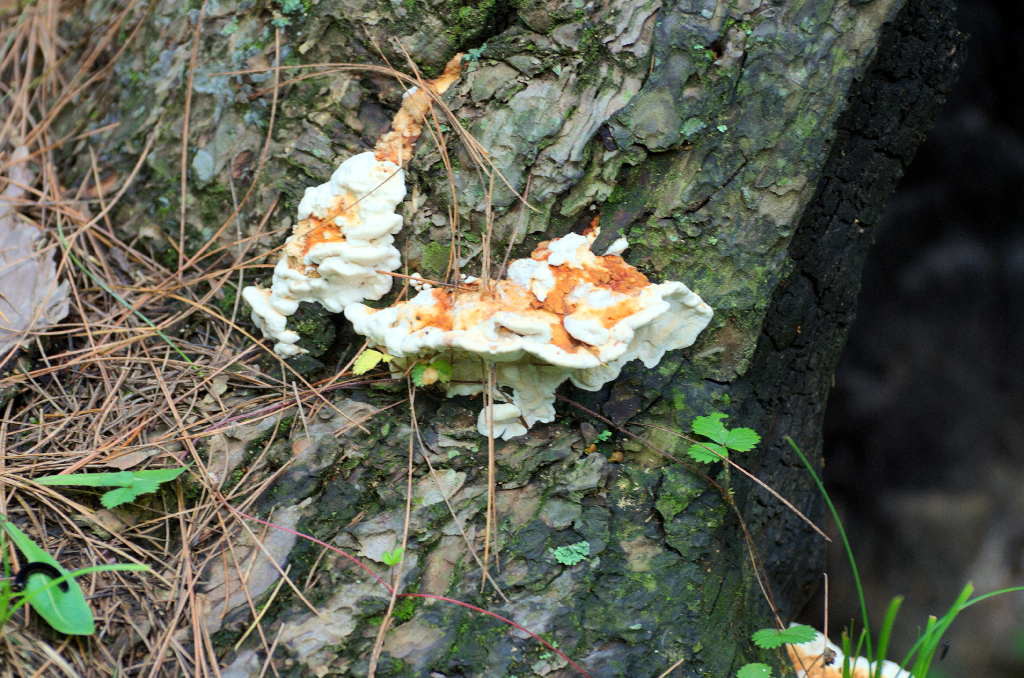
Phellinus spp
Phellinus spp are a group of wood-decaying fungi that play a vital ecological role in the Great Himalayan National Park (GHNP). These fungi are essential decomposers, breaking down complex plant materials like lignin and cellulose in deadwood. Their action helps return crucial nutrients to the soil, supporting new plant growth and maintaining the health of the forest ecosystem.
These fungi typically form large, woody, shelf-like structures on tree trunks and fallen logs. The upper surface is dark brown to black and often cracked, while the lower side contains tiny pores from which spores are released. These bracket fungi are perennial and can persist for years, growing slowly but steadily.
In the GHNP, Phellinus spp are mostly found in the park’s moist temperate and coniferous forests, particularly on old or dead trees like oak, deodar, and spruce. Their presence often indicates a mature and undisturbed forest ecosystem. Though not commonly used in local medicine, research indicates that some Phellinus species possess antimicrobial and antioxidant properties.
They also contribute to biodiversity by creating microhabitats for insects, mosses, and birds. As silent recyclers, Phellinus spp are essential for forest regeneration and resilience in GHNP.
Conclusion
In conclusion, Phellinus spp plays an indispensable role in the ecological balance of the Great Himalayan National Park. As efficient decomposers, they help recycle nutrients and maintain forest health by breaking down deadwood, fallen trees, and organic matter. This process not only ensures the regeneration of the forest ecosystem but also supports the growth of new plants and the survival of countless species that depend on this intricate balance.
The presence of Phellinus spp serves as an indicator of a healthy and thriving environment, symbolizing the park’s rich biodiversity and ecological resilience. These fungi contribute to soil fertility and structure, supporting both flora and fauna across the park. By decomposing organic matter, they also enhance water retention in the soil, benefiting the surrounding vegetation and animal populations.
Moreover, the interactions between Phellinus spp and other organisms in the ecosystem—such as trees, plants, and wildlife—highlight the interconnectedness of nature. Their role in nutrient cycling and forest regeneration ensures the longevity and sustainability of the Great Himalayan National Park’s diverse ecosystems.
As we continue to protect and conserve this UNESCO World Heritage site, the importance of Phellinus spp and similar species will remain pivotal in maintaining the park’s natural integrity and ecological health. The conservation of such organisms, therefore, is key to ensuring the long-term preservation of the region’s rich biodiversity for future generations.



